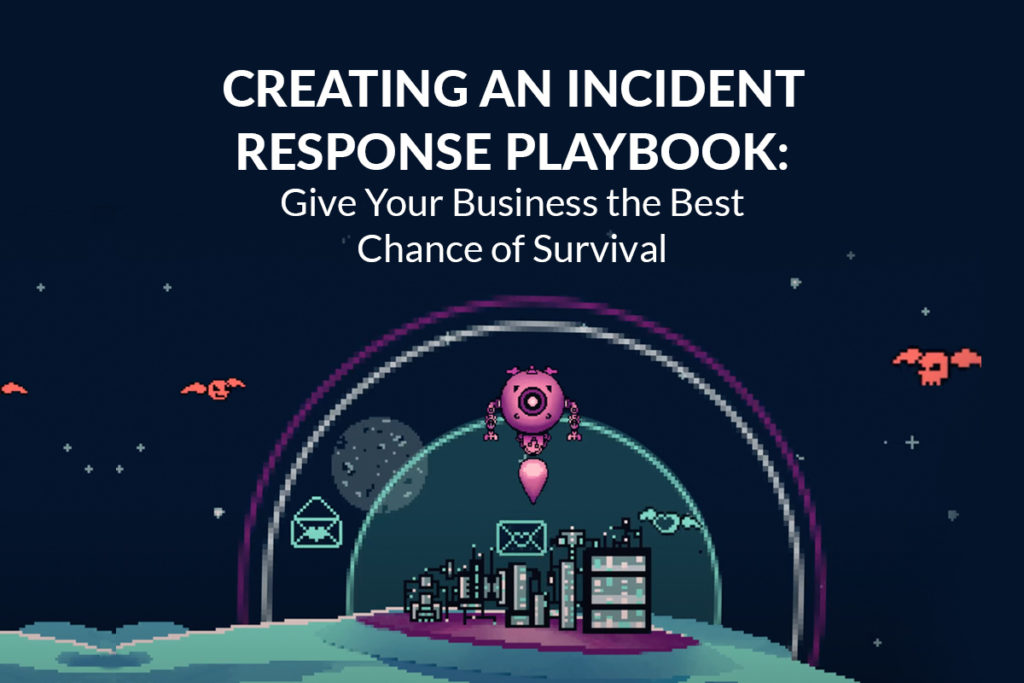Is Phishing a Social Engineering Attack?

Social interaction and the connections it forges are an essential part of our business and personal lives. Every organization depends on innumerable human interactions to function efficiently in its day-to-day operations. However, cybercriminals have also started using social engineering techniques to launch sophisticated cyberattacks, wreaking havoc on organizations. Day in and day out, people fall prey to cybercriminals’ devious social engineering lures, opening the door for cyberattacks. If an employee falls for a social engineering trick at work, it can lead to a cyberattack that can destroy the company. According to a Securities and Exchange Commission (SEC) report, about 60% of SMBs go out of business within six months of a successful data breach or cyberattack. Learning about social engineering and how to protect your organization from it can help prevent that from happening to your company.

Get the guide that helps you detect & defeat dangerous BEC attacks to keep your company out of trouble! DOWNLOAD IT>>
Is phishing a social engineering attack?
Phishing is the perfect example of a social engineering attack. In phishing, attackers rely heavily on human interaction and often manipulate people into providing passwords revealing sensitive information to them or downloading malicious software on the victim’s network. Cybercriminals use social engineering techniques to conceal their identities and motives, presenting themselves as trusted individuals, brands or information sources. They rely on people’s willingness to be helpful or their fear of punishment. For instance, the attacker might pretend to be a senior-level employee, using fear to compel the victim to send them payroll data or face serious consequences.
Is phishing the most common form of social engineering?
Phishing is the most common cyberattack employees face and the most likely way they’ll encounter social engineering by cybercriminals. Businesses are inundated with phishing attacks every day. That problem is only growing worse over time. Phishing attacks have seen a monumental rise in recent years. According to the SlashNext State of Phishing Report for 2022, in the first six months of 2022, more than 255 million phishing attacks were reported — a 61% increase in the rate of phishing attacks compared to 2021.
These are some examples of the common types of phishing attacks employees are likely to encounter that rely on social engineering:
- Business email compromise (BEC) — A BEC attack begins with cybercriminals hacking or spoofing email accounts from a trusted business to fraudulently acquire money, personal information, financial details, payments, credit card numbers and other data from a different firm. The scammers use social engineering techniques to make the emails look authentic and trustworthy.
- Spear phishing — Spear phishing is a highly targeted, well-researched attack. It can be used against any target. What makes spear phishing so dangerous is that, in this scenario, bad actors use information about their target to craft a malicious message that the target will find particularly compelling. This technique can be used to launch a panoply of cyberattacks, including spreading malware like ransomware.
- Angler phishing — Angler phishing is a new type of cyberattack where cybercriminals disguise themselves as customer service agents on social media to reach out to disgruntled company customers and obtain their personal information or account credentials on the pretext of solving their grievances. This type of socially engineered phishing attack is growing thanks to the world’s increasing use of social media and messaging platforms.
- Brand impersonation — In this attack, cybercriminals use social engineering by imitating a trusted brand to trick victims into responding and disclosing personal and sensitive information. Hackers use domain-spoofing techniques or lookalike domains to make their impersonation attempts convincing. For example, bad actors often claim they’re from DHL, and the target needs to give them information to receive a package by logging into a convincing-looking fake website.

Are you ready to stop ransomware? Find out with our 5 Steps to Ransomware Readiness infographic! GET IT>>
How are phishing and social engineering related?
Phishing and social engineering are related because convincing the target to take action is the goal of every phishing attack. Although phishing is only a subset of social engineering attacks, both rely on human interaction to manipulate or trick victims into giving up sensitive information or clicking on malware-laden attachments. Social engineering is commonly used in phishing to create an urgency that rushes victims into following the instructions of cybercriminals.
What’s the difference between phishing and social engineering?
The difference between phishing and social engineering is that phishing is limited to giving a bad actor information, passwords or money using some type of technology, but social engineering can take place in any setting, in person or through technology. Social engineering attacks psychologically manipulate people into divulging information or taking an action that benefits the cybercriminals, like transferring money or giving them access to sensitive systems. Additionally, while phishing attacks cast a wide net in hopes of catching a few unwary victims, social engineering attacks are highly targeted attacks that target a small number of potential victims.
How is social engineering used in phishing attacks?
Since phishing relies on manipulating the victims, social engineering is the content that tricks victims into doing something dangerous, such as revealing confidential information or downloading malware. Using social engineering techniques, scammers pretend to look like trusted entities such as colleagues, friends, bosses, banks, government organizations and familiar brands that persuade unsuspecting victims into following the cybercriminals’ instructions.

Learn how incident response planning boosts cyber resilience & security. GET THE EBOOK>>
Protect your organization from phishing with Graphus
Graphus is the world’s first AI-driven email security solution that eliminates phishing attacks before users seen them. Graphus doesn’t fall for social engineering. It uses patented AI technology to spot and stop dangerous phishing messages, including sophisticated phishing messages that use social engineering. Graphus puts three layers of defense between a phishing email and your employees and automatically monitors communication patterns between people, devices and networks to reveal untrustworthy emails, making it a simple, powerful and cost-effective automated phishing defense solution for organizations.
Here are some of the features that make Graphus the best email security solution:
- Blocks sophisticated phishing messages before users see them.
- Puts three layers of protection between employees and phishing email messages
- Seamlessly deploys to Microsoft 365 and Google Workspace via API, without big downloads or lengthy installs
- Provides intuitive administration and precise reporting to help you gain insights into the effectiveness of your security, level of risks, attack types and more
Book of demo of Graphus to start your email security journey.










